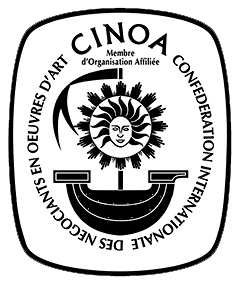German sundial
Global shipping available
- Origin
- Germany
- Period
- second part 16th century
- Material
- Gilt and silvered brass, glass
- Height
- 1.7 cm
- Width
- 6.4 cm
- Depth
- 6.7 cm
- Literature
M. Cowham, A dial in your poke, Cambridge 2011, pp. 129 - 134.
Questions about this object?
Please use one of the contact options below:
Description
This box-shaped sundial has a double lid and is made of gilt and silvered brass. By stretching a wire between the vertical removable gnomon and the designated hole in the lower lid plate, the hours can be read on an engraved hour ring in Roman numerals and one in Arabic numerals. On part of the hour ring are remnants of gilding, indicating the hours of light. The sundial was made for a single north latitude; no place names are given. From the stated hours of sunset, one may deduce that the sundial was made for a place in southern Germany. In the lower lid plate, under a glass plate, is a compass with a compass rose. Above the compass is a movable hand. On the hour ring are the wind directions: Septentrio, Ortus, Meridies, Occasus, respectively north, east, south and west. Between the wind directions are floral motifs against a black background.
In the upper lid are three rotating wheels which indicate the days of the month and the corresponding phases of the moon. On the upper disc is engraved a moon with a face, on the second ring a sun with a face and the numerals for the calendar days. When the discs are turned to the correct date and time, the hole in the upper disc indicates the correct phase of the moon. Below these two rings is a third ring with 24-hour notation. Below this is an engraved circle with twice 1 to 12 in Roman numerals, a Latin text explaining the use of the calendar and the months. The months are indicated by letters (I, F, M, A, M, I, A, S, O, N, D) and are arranged in two rows below each other. Both lids are decorated with decorative wickerwork in the Moorish style.
The top of the lid shows a wind rose, with a hole in the middle for the separate wind vane. The eight wind directions are indicated by Tramontana (north), Greco (north-east), Levante (east), Sirocchio (south-east), Ostro (south), Lebecchio (south-west), Ponente (west), Mastro (north-west). Around the rose are four wind-blowing faces. On the sides of the lower lid is a German text, in Gothic letters, starting on the left. On the reverse side of the sundial is a German instruction text, explaining the setting of the calendar in the lid. This text is framed with the same wickerwork as on the inside. The baluster-shaped and twisted gnomon and the wind vane are later components.









